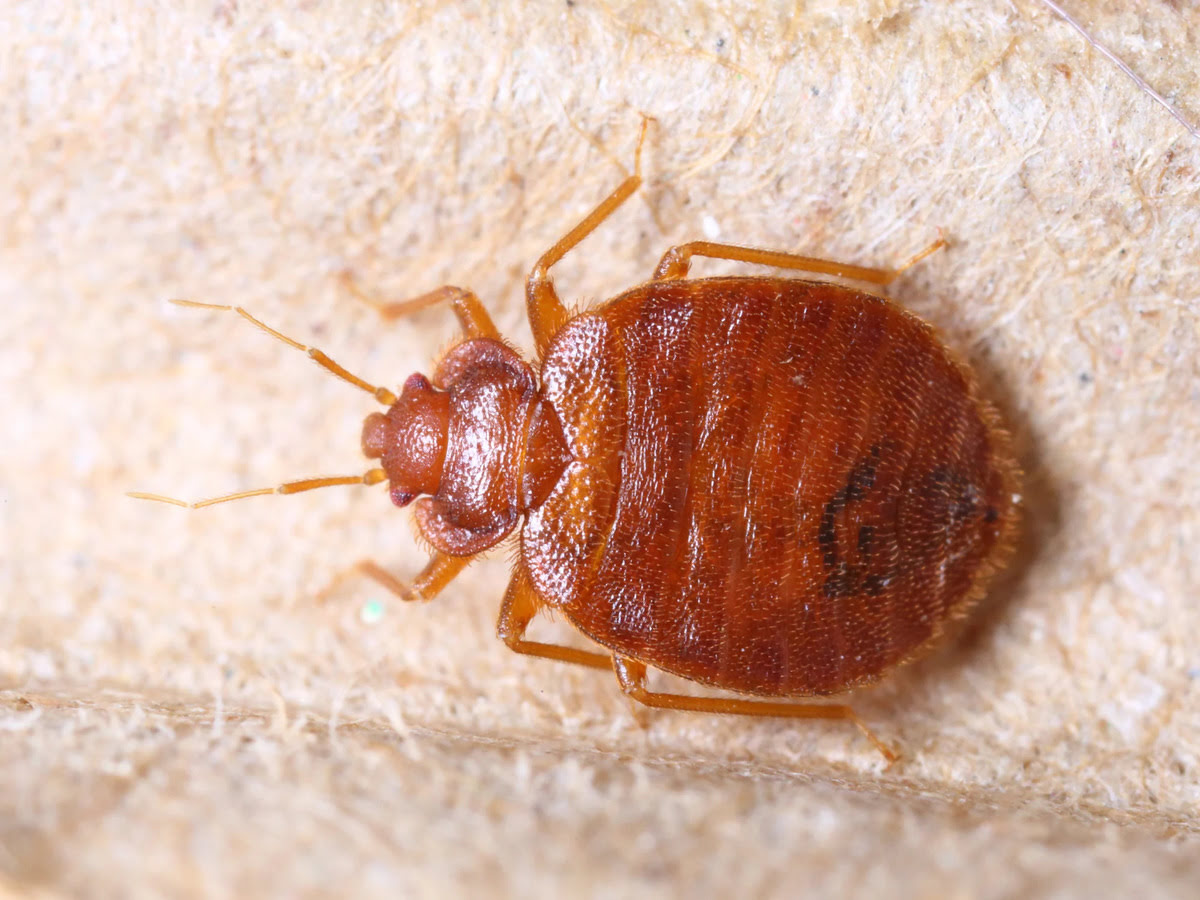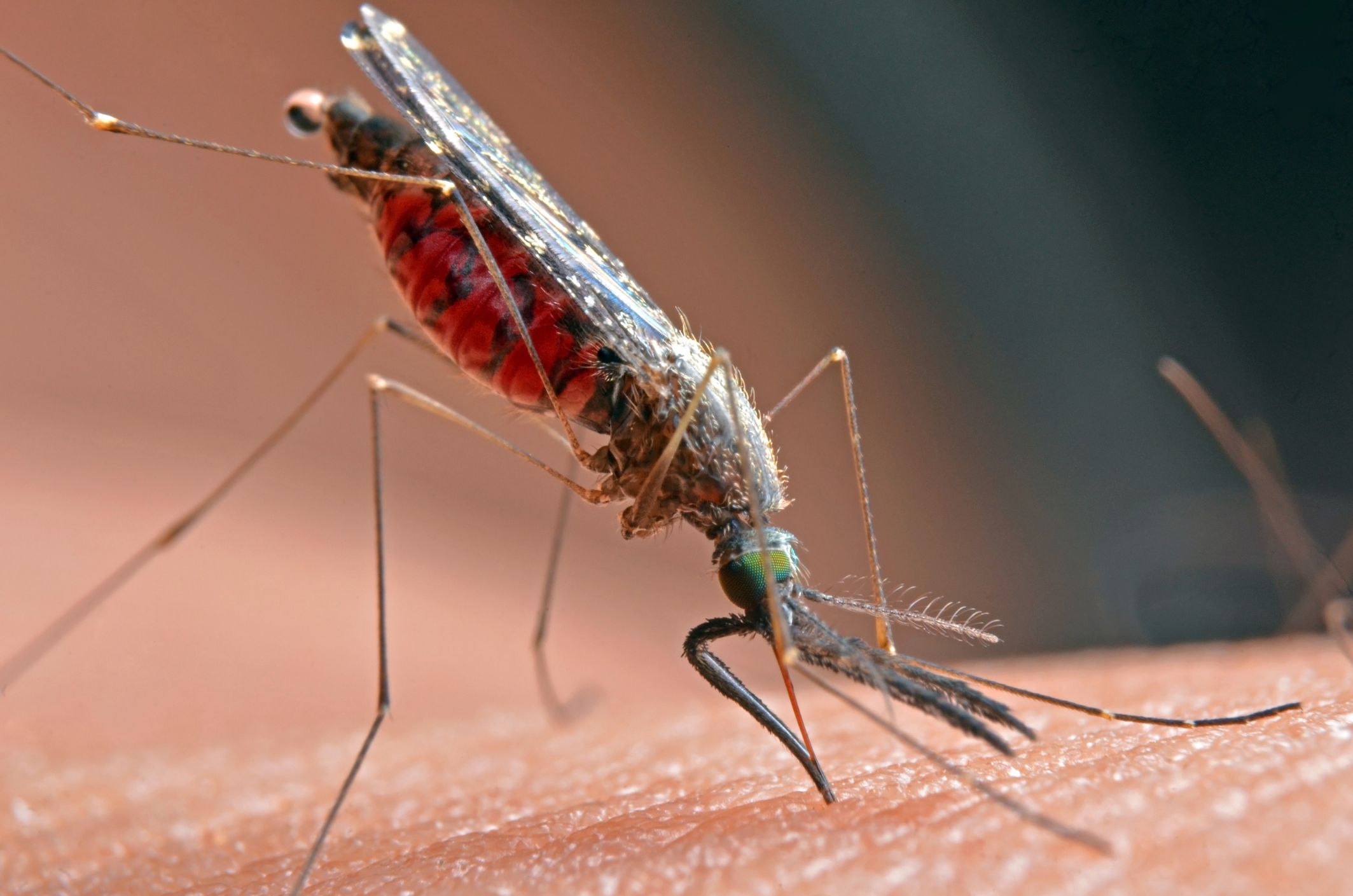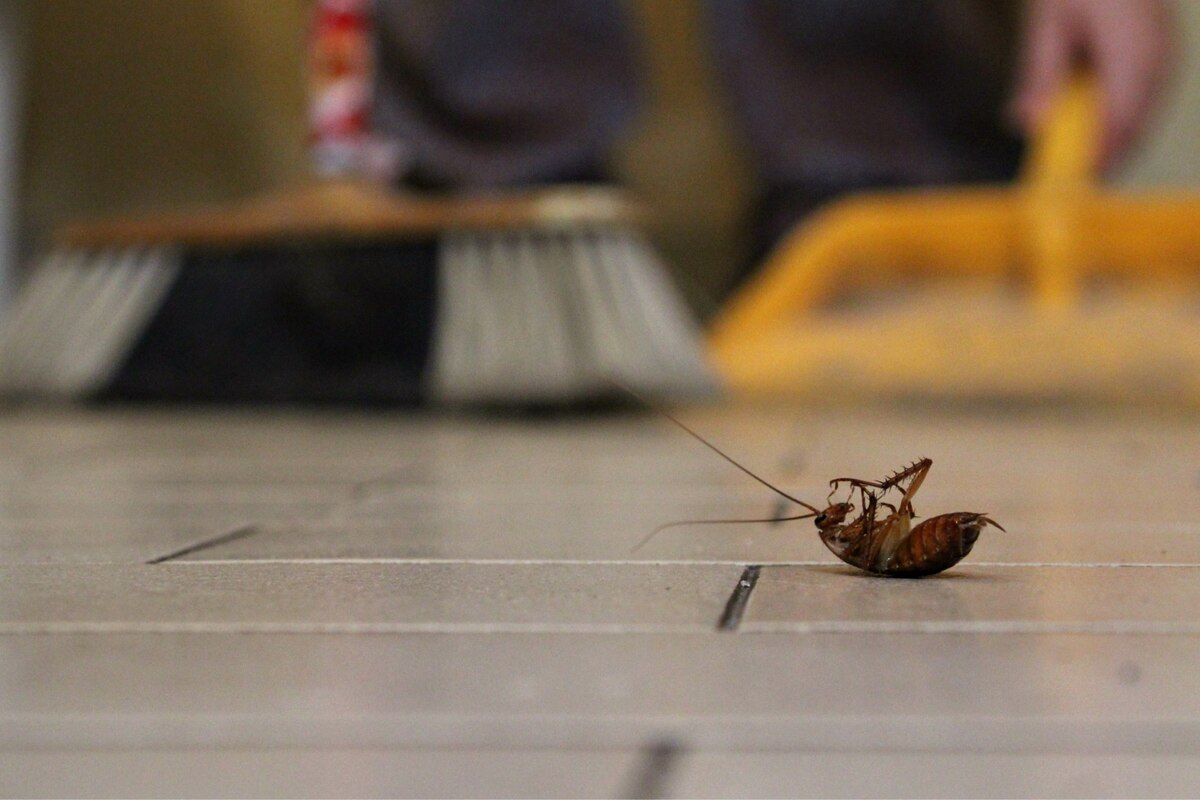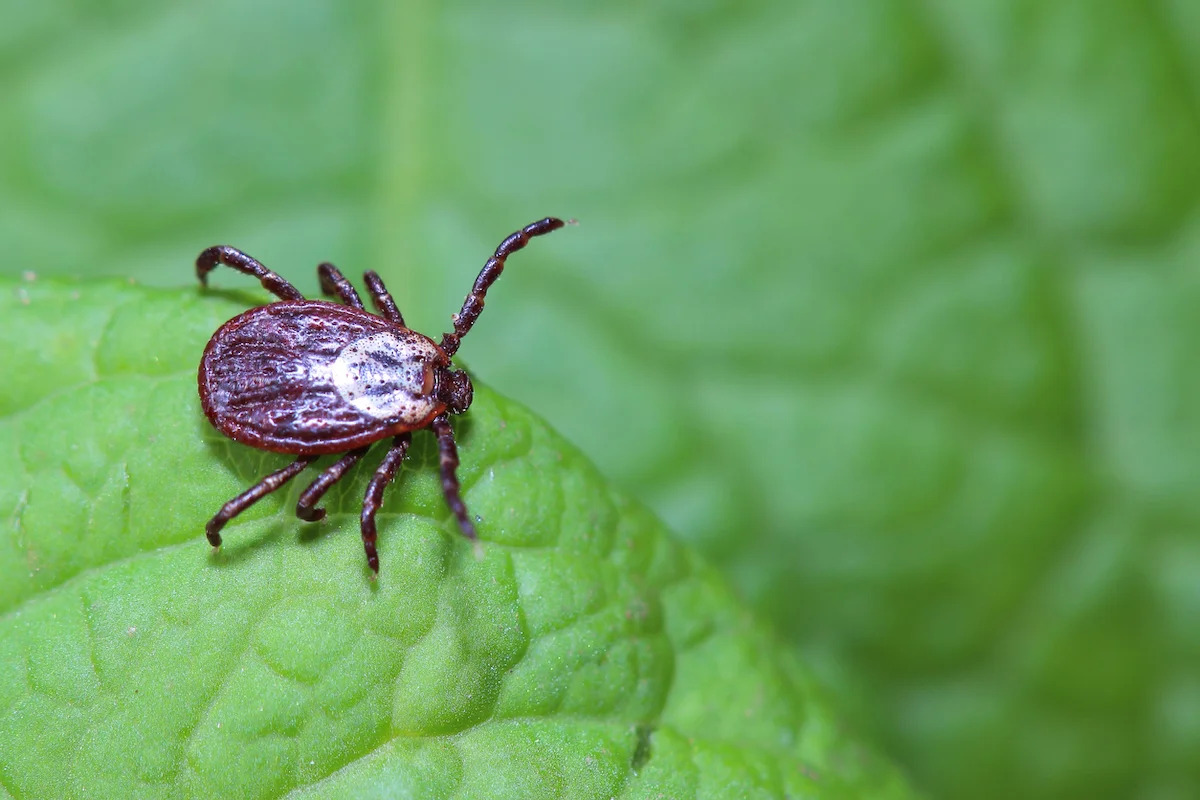Home>Gardening News and Trends>Latest News>How Does The Emerald Ash Borer Kill Trees


Latest News
How Does The Emerald Ash Borer Kill Trees
Modified: January 22, 2024
Discover the latest news on how the Emerald Ash Borer infestation devastates trees, as experts unveil the shocking truth behind its destructive capabilities.
(Many of the links in this article redirect to a specific reviewed product. Your purchase of these products through affiliate links helps to generate commission for Chicagolandgardening.com, at no extra cost. Learn more)
Table of Contents
Introduction
The Emerald Ash Borer (EAB), scientifically known as Agrilus planipennis, is an invasive species that poses a significant threat to ash trees. Originally from Asia, this small green beetle was first identified in North America in 2002, and since then, it has spread rapidly, causing extensive damage to ash tree populations.
The life cycle of the Emerald Ash Borer starts with adult beetles laying eggs on the bark of ash trees during the summer months. Once the eggs hatch, the larvae burrow into the tree and feed on the inner bark, creating winding galleries as they chew through the nutritious phloem layer.
As the larvae grow, they continue to feed on the tree’s cambium layer, disrupting the flow of water and nutrients, which eventually leads to the death of the afflicted tree. The damage caused by the Emerald Ash Borer weakens the tree’s structure, making it more susceptible to breakage and increasing the risk of falling branches.
Infestations of the Emerald Ash Borer have been particularly devastating to North American ash tree species, including the green ash, white ash, black ash, and blue ash. These trees are valuable components of both urban landscapes and forest ecosystems, providing shade, habitat, and ecological benefits.
The feeding behavior of the Emerald Ash Borer involves the consumption of the tree’s phloem and cambium, essential tissue layers responsible for nutrient transport and growth. The beetle’s larvae create intricate galleries that disrupt the tree’s vascular system, preventing the circulation of water and nutrients, thereby impairing the tree’s ability to receive essential resources.
Life Cycle of the Emerald Ash Borer
The life cycle of the Emerald Ash Borer consists of four distinct stages: egg, larva, pupa, and adult. Understanding this life cycle is crucial in managing and controlling the spread of this destructive pest.
1. Egg stage: Adult female Emerald Ash Borers lay their eggs on the bark of ash trees, typically in crevices or bark flakes. Each female can lay hundreds of eggs during her lifetime. The eggs are tiny, measuring approximately 1mm in length and are initially white but turn a reddish-brown color as they age.
2. Larval stage: Once the eggs hatch, the larvae emerge and burrow into the bark, reaching the phloem layer beneath. These creamy-white larvae have a slim, segmented body and grow up to 1-1.5 cm in length. They create long winding galleries as they feed on the nutritious inner bark, causing extensive damage to the tree’s vascular tissues.
3. Pupa stage: After completing their larval feeding stage, the Emerald Ash Borer larvae tunnel back toward the bark surface and create a small chamber called a pupal chamber. Inside this chamber, the larvae transform into pupae, which are inactive and non-feeding life stages resembling adult beetles. The pupal stage typically lasts for approximately two weeks.
4. Adult stage: Once the transformation is complete, adult Emerald Ash Borers emerge from the tree through distinct D-shaped exit holes, which are distinctive signs of infestation. These adult beetles are slender, metallic green in color, and measure about 8-12 mm in length. They have long antennae and wings that enable them to disperse through flight.
Upon emergence, adult Emerald Ash Borers seek out mates to reproduce, and the life cycle begins again as the females lay more eggs on ash tree bark. The entire life cycle from egg to adult typically takes one year, although it can vary depending on environmental conditions such as temperature and food availability.
Understanding the life cycle of the Emerald Ash Borer is essential for implementing effective management and control strategies. By targeting vulnerable stages of the life cycle, such as the egg and larval stages, it is possible to mitigate the spread of this destructive pest and minimize the damage it causes to ash tree populations.
Infestation and Damage
The infestation of the Emerald Ash Borer has had devastating consequences for ash tree populations across North America. This invasive pest has spread rapidly, causing extensive damage to both urban and forested areas where ash trees are prevalent.
The spread of the Emerald Ash Borer can occur through natural means, such as adult beetles flying to neighboring trees, or through human activities, such as the unintentional transportation of infested wood products. Once the beetles infest an ash tree, they begin to cause significant damage to its vital tissues.
The larvae of the Emerald Ash Borer burrow into the tree’s bark and feed on the phloem layer, which is responsible for nutrient transport. As they chew through the phloem, the larvae disrupt the flow of water and nutrients within the tree, ultimately starving it of essential resources.
In addition to feeding on the phloem, the larvae also attack the cambium layer, which is crucial for the tree’s growth and development. By tunneling through the cambium, the Emerald Ash Borer larvae severely weaken the structural integrity of the tree, making it more susceptible to breakage and toppling during severe weather conditions.
One of the telltale signs of an Emerald Ash Borer infestation is the presence of D-shaped exit holes on the tree’s bark. These small, distinct holes are created when the adult beetles emerge from the tree after completing their development. Other visible signs of an infestation include thinning foliage, dieback of branches, and the presence of S-shaped galleries under the bark.
The damage caused by the Emerald Ash Borer can result in the decline and eventual death of ash trees. It is estimated that nearly all untreated ash trees infested with the Emerald Ash Borer will succumb to the pest over time. This has significant implications for urban landscapes, as ash trees provide numerous benefits such as shade, aesthetic value, and air quality improvements.
Furthermore, the impact of the Emerald Ash Borer extends beyond urban areas. Forested ecosystems that rely on ash trees as a component of their biodiversity are also experiencing severe consequences. With the loss of ash trees, there is a disruption in the ecological balance, affecting wildlife habitats and altering nutrient dynamics within the ecosystem.
Efforts to manage and control infestations of the Emerald Ash Borer have been pursued through various strategies, including the use of biocontrol agents, insecticide treatments, and tree removal and replacement programs. However, due to the rapid spread and resilience of this invasive pest, preventing further damage and preserving ash tree populations remains an ongoing challenge.
Feeding Behavior of the Emerald Ash Borer
The feeding behavior of the Emerald Ash Borer is a key factor in understanding the damage caused by this invasive pest. The larvae of the Emerald Ash Borer have a voracious appetite and primarily feed on the phloem and cambium layers of ash trees.
After the eggs hatch and the larvae emerge, they tunnel through the bark and into the phloem layer, where they begin to feed. The phloem is responsible for transporting water, sugars, and other vital nutrients throughout the tree. By consuming the phloem tissues, the Emerald Ash Borer larvae disrupt this nutrient flow, causing stress and weakening the overall health of the tree.
The feeding activity of the larvae is particularly destructive as they create winding galleries as they chew through the phloem. These galleries disrupt the flow of water and nutrients, effectively starving the tree by cutting off its supply. As a result, the tree struggles to survive, leading to a decline in health, foliage thinning, and eventual death.
In addition to feeding on the phloem layer, the Emerald Ash Borer larvae also attack the cambium layer. The cambium is responsible for cell division and the growth of new tissues, necessary for the tree’s growth and structural integrity. By tunneling through the cambium, the larvae further weaken the tree’s structure, making it vulnerable to breakage and damage from external forces.
The feeding behavior of the Emerald Ash Borer not only affects individual trees but also has broader implications for ash tree populations. As more and more trees become infested, the cumulative damage weakens the overall health and resilience of ash tree populations, making them more susceptible to secondary infections and environmental stresses.
Understanding the feeding behavior of the Emerald Ash Borer is crucial for developing effective management and control strategies. By targeting the larvae during their feeding stage, interventions such as insecticide treatments and the use of biocontrol agents can be implemented to reduce the damage inflicted by this destructive pest.
Efforts to disrupt the feeding behavior of the Emerald Ash Borer focus on minimizing the population of larvae, preventing their access to trees, and interrupting their ability to feed and reproduce. By addressing the feeding behavior and life cycle of the Emerald Ash Borer, it is possible to mitigate the damage caused by this invasive species and protect ash tree populations from further devastation.
Ash Tree Mortality
Ash tree mortality is a severe consequence of infestation by the Emerald Ash Borer (EAB). This invasive pest has decimated ash tree populations across North America, leading to widespread tree death and significant ecological consequences.
The Emerald Ash Borer larvae feed on the phloem and cambium layers, disrupting the flow of water, nutrients, and sugars within the tree. This disruption impairs the tree’s ability to sustain itself and ultimately leads to its decline and death.
Once infested by the Emerald Ash Borer, an ash tree’s health deteriorates rapidly. The initial signs of infestation include thinning foliage and dieback of branches. As the infestation progresses, the tree’s canopy thins further, and the overall health of the tree declines. Without access to the necessary nutrients and water, the tree becomes weakened and more susceptible to diseases and other environmental stresses.
Over time, an infested ash tree will show visible signs of severe decline, such as the loss of leafy foliage, bark splitting, and the presence of extensive woodpecker activity. Eventually, the combination of the Emerald Ash Borer’s feeding and the tree’s weakened state leads to its death.
Ash tree mortality due to Emerald Ash Borer infestation is estimated to be nearly 100% for untreated trees. This high mortality rate has had significant impacts on both urban and forested areas that were once abundant with ash trees.
In urban landscapes, the loss of ash trees has resulted in a dramatic change in the appearance and functionality of parks, streets, and neighborhoods. Ash trees are valued for their shade, aesthetic appeal, and ability to improve air quality. With their demise, the benefits they provide are lost, affecting the quality of life for residents and the overall beauty of the environment.
In forested ecosystems, ash trees play a crucial role in maintaining biodiversity and providing habitats for numerous plant and animal species. The loss of ash trees disrupts the intricate balance of these ecosystems, affecting wildlife populations and the overall stability of the ecosystem.
The impact of ash tree mortality extends beyond immediate environmental factors. It also has economic implications. The cost of removing dead or dying ash trees, replanting with different species, and potentially treating and protecting valuable ash trees from infestation can be substantial.
Efforts to combat ash tree mortality involve a combination of strategies, including the use of insecticides to protect valuable trees, the implementation of biocontrol measures, such as introducing natural enemies of the Emerald Ash Borer, and the removal and replacement of infested trees.
Managing ash tree mortality caused by the Emerald Ash Borer requires ongoing vigilance and proactive measures. By identifying infested trees early, implementing appropriate management strategies, and promoting the planting of diverse tree species, it is possible to mitigate the long-term impact and preserve the ecological integrity of the affected areas.
Impact on Forests and Urban Landscapes
The Emerald Ash Borer (EAB) has had a profound impact on both forests and urban landscapes, causing significant ecological and aesthetic damage. This invasive pest has spread rapidly across North America, devastating ash tree populations and altering the visual appeal and functionality of affected areas.
In forests, the loss of ash trees disrupts the natural balance of ecosystems. Ash trees play a vital role in maintaining biodiversity by providing habitat for various plant and animal species. With the massive decline in ash tree populations, there is a loss of habitat and food sources for wildlife, negatively impacting the overall forest ecology.
Furthermore, the death of ash trees alters nutrient cycling and forest dynamics. Ash trees are known to have unique characteristics, such as their ability to tolerate different soil and moisture conditions. Their absence creates a void within the ecosystem, affecting nutrient availability and potentially impacting the growth and survival of other tree species.
In urban landscapes, the impact of the Emerald Ash Borer is equally significant. Ash trees are commonly planted in parks, along streets, and in other green spaces due to their aesthetic value, shade provision, and ability to improve local air quality. The loss of these trees has not only altered the visual appeal of urban areas but has also impacted the well-being of residents.
With the decline of ash trees, the loss of shade and cooling effects can result in increased urban heat island effects, leading to higher energy consumption for cooling buildings and decreased comfort levels for pedestrians. Additionally, the absence of ash trees reduces the habitat available for urban wildlife, impacting local biodiversity and ecological balance.
The impact on urban forestry budgets is also significant. The cost of removing dead or dying ash trees, replanting with other species, and implementing management strategies to control the Emerald Ash Borer can put a strain on city budgets.
Efforts to mitigate the impact of the Emerald Ash Borer on forests and urban landscapes include the implementation of management plans and strategies. These can involve tree removal and replacement programs, the use of insecticides to protect valuable trees, and the promotion of diverse tree planting to reduce the risk of future infestations.
Ultimately, addressing the impact of the Emerald Ash Borer on forests and urban landscapes requires a multi-faceted approach. By focusing on both the ecological and aesthetic aspects of affected areas, it is possible to minimize the long-term consequences and preserve the beauty and functionality of these important environments.
Control and Management Strategies
Controlling and managing the spread of the Emerald Ash Borer (EAB) is crucial in mitigating the damage caused by this invasive pest. Various strategies have been implemented to combat the infestation and protect ash tree populations in both urban and forested areas.
1. Insecticide Treatments: Insecticides can be used to protect high-value ash trees from Emerald Ash Borer infestation. Systemic insecticides are applied to the soil around the base of the tree or injected directly into the trunk. These treatments can help prevent larvae from feeding on the tree’s phloem and cambium, effectively slowing down or halting the progression of the infestation.
2. Biocontrol: Biological control methods involve introducing natural enemies of the Emerald Ash Borer to limit its population and spread. The release of parasitic wasps, such as Tetrastichus planipennisi and Oobius agrili, has shown promise in reducing EAB populations. These wasps parasitize the eggs and larvae of the Emerald Ash Borer, helping to control their numbers.
3. Tree Removal and Replacement: Infested ash trees that are beyond recovery need to be promptly removed to prevent the spread of the Emerald Ash Borer to nearby healthy trees. Replacement with a diverse range of tree species is recommended to reduce the risk of future infestations and increase the resilience of the urban and forest ecosystems.
4. Quarantine Measures: Implementing quarantines and restrictions on the movement of ash wood and plant materials can help prevent the unintentional spread of the Emerald Ash Borer to new areas. This includes restrictions on the transport of firewood, which can unknowingly harbor Emerald Ash Borer larvae.
5. Public Awareness and Education: By raising awareness about the Emerald Ash Borer and its impact, individuals can play a vital role in detecting and reporting infested trees. Educating the public about the signs of infestation, proper disposal methods for ash wood, and the importance of preventative measures can help slow down the spread of the pest.
It is important to note that no single strategy alone can completely eradicate the Emerald Ash Borer. Integrated Pest Management (IPM) approaches that combine several methods tailored to specific circumstances are often the most effective. This may involve a combination of insecticide treatments, biocontrol agents, and tree removal programs.
Developing and implementing long-term management plans is paramount to mitigate the impact of the Emerald Ash Borer. These plans should focus on early detection, monitoring, and the prioritization of tree treatments based on factors such as tree health, location, and public safety concerns.
Ultimately, cooperation and collaboration among government agencies, municipalities, arborists, researchers, and the general public are necessary to effectively control and manage the Emerald Ash Borer. Through a combination of proactive measures, ongoing research, and public engagement, it is possible to protect ash tree populations and preserve the beauty and ecological integrity of affected areas.
Conclusion
The Emerald Ash Borer poses a significant threat to ash trees in North America, causing widespread damage and mortality. This invasive pest, with its destructive feeding behavior, has had a profound impact on both forests and urban landscapes.
The life cycle of the Emerald Ash Borer, from egg to adult, involves the larvae feeding on the phloem and cambium layers of ash trees. This feeding disrupts nutrient flow, weakens the tree’s structure, and eventually leads to its decline and death. Ash tree mortality rates in infested areas are alarmingly high, with untreated trees succumbing to the pest over time.
The impact of the Emerald Ash Borer extends beyond individual trees to whole ecosystems. In forests, the loss of ash trees disrupts biodiversity, alters nutrient cycling, and affects wildlife habitats. In urban landscapes, the absence of ash trees negatively impacts aesthetics, shade provision, and air quality improvement.
Efforts to control and manage the Emerald Ash Borer include the use of insecticide treatments, biocontrol measures, tree removal and replacement programs, quarantine measures, and public awareness campaigns. Integrated approaches that combine multiple strategies tailored to specific circumstances are crucial in mitigating the damage and preserving ash tree populations.
However, the battle against the Emerald Ash Borer is ongoing. The pest’s ability to spread rapidly and adapt, combined with the large population of susceptible ash trees, presents ongoing challenges. Continued research, monitoring, and engagement from government agencies, municipalities, researchers, arborists, and the public are necessary to effectively manage and control the Emerald Ash Borer’s impact.
By working together, it is possible to protect remaining ash tree populations, minimize further damage, and restore the ecological balance in affected areas. Through vigilance, proactive measures, and the promotion of diverse tree planting, we can shape a future in which ash trees can thrive once again.





